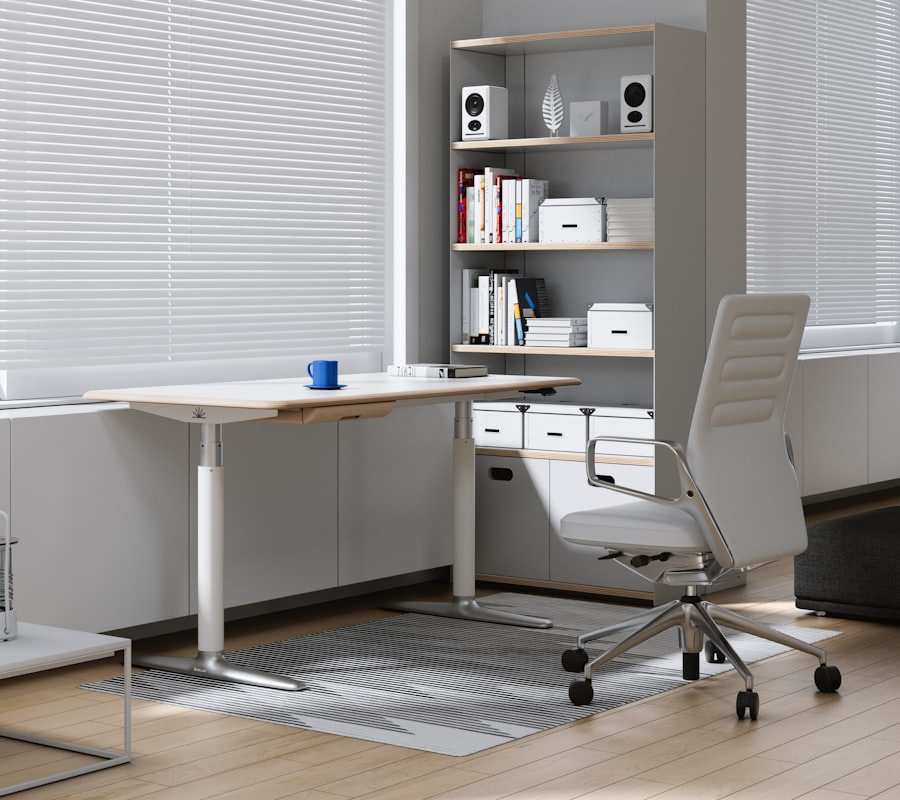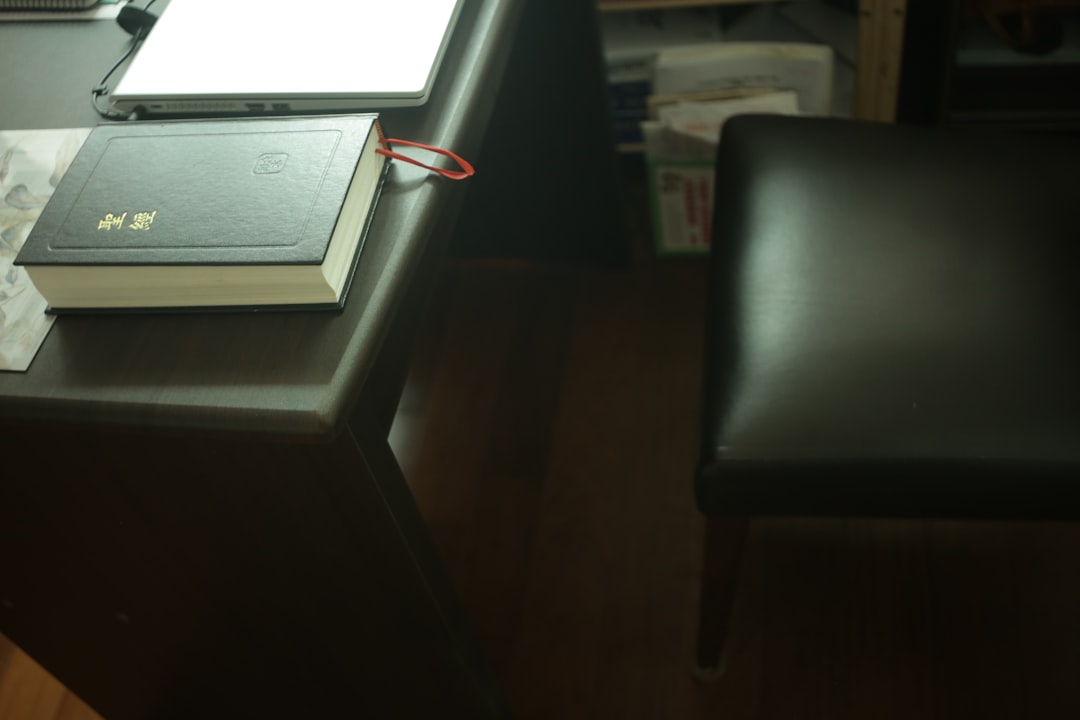Regular stretching is a fundamental aspect of maintaining physical health and well-being, particularly in a world where many individuals find themselves confined to desks for extended periods. Stretching serves not only to enhance flexibility but also to improve circulation, reduce muscle tension, and promote overall body awareness. When individuals engage in consistent stretching routines, they often experience a greater range of motion in their joints, which can lead to improved performance in daily activities and exercise.
Furthermore, stretching can be a powerful tool for injury prevention, as it prepares the muscles and tendons for the demands placed upon them. In addition to its physical benefits, stretching can also have a profound impact on mental health. The act of stretching encourages mindfulness and can serve as a moment of respite in a busy day.
By taking time to focus on the body and breath, individuals can cultivate a sense of calm and reduce stress levels. This dual benefit of physical and mental enhancement makes regular stretching an essential practice for anyone looking to improve their overall quality of life.
Key Takeaways
- Regular stretching is important for maintaining flexibility and preventing muscle stiffness and tension.
- Prolonged sitting can lead to tight muscles, poor posture, and increased risk of musculoskeletal issues.
- A 7-minute desk stretch routine can help alleviate the negative effects of prolonged sitting and improve overall well-being.
- Simple stretches targeting the neck and shoulders can provide relief from tension and discomfort caused by desk work.
- Focusing on lower back and hip flexibility through targeted stretches can help reduce discomfort and improve mobility.
Understanding the Effects of Prolonged Sitting
Prolonged sitting has become a hallmark of modern work life, particularly with the rise of remote work and sedentary office environments. The negative effects of extended periods of inactivity are well-documented, with research indicating that sitting for long durations can lead to a host of health issues, including obesity, cardiovascular disease, and musculoskeletal disorders. When individuals remain seated for hours on end, their muscles become stiff, circulation slows, and the risk of developing chronic pain increases significantly.
Moreover, prolonged sitting can adversely affect posture, leading to imbalances that may result in discomfort or injury over time. The body is designed for movement, and when it is deprived of that movement, it can lead to tightness in certain muscle groups while others weaken. This imbalance can create a cycle of pain and discomfort that is difficult to break.
Understanding these effects is crucial for individuals who spend significant time at their desks, as it highlights the importance of incorporating movement and stretching into their daily routines.
Benefits of a 7-Minute Desk Stretch Routine

A 7-minute desk stretch routine can be a game-changer for those who find themselves sitting for long periods. This brief yet effective routine allows individuals to break up their day with movement, helping to alleviate tension and restore energy levels. One of the primary benefits of such a routine is its accessibility; it requires minimal space and can be performed without any special equipment.
This makes it easy for anyone to integrate into their workday, regardless of their office setup. Additionally, a quick stretch routine can significantly enhance productivity. By taking just a few minutes to stretch, individuals often find that they return to their tasks with renewed focus and clarity.
The act of moving the body stimulates blood flow to the brain, which can improve cognitive function and creativity. In this way, a 7-minute desk stretch routine not only addresses physical discomfort but also supports mental acuity, making it an invaluable practice for anyone looking to optimize their work performance.
Simple Stretches to Relieve Neck and Shoulder Tension
| Stretches | Description |
|---|---|
| Neck Rolls | Gently roll your head in a circular motion, first clockwise and then counterclockwise, to release tension in the neck. |
| Shoulder Shrugs | Raise your shoulders up towards your ears, hold for a few seconds, and then release to relieve tension in the shoulders. |
| Neck Stretch | Tilt your head to one side, bringing your ear towards your shoulder, to stretch the muscles on the side of your neck. |
| Shoulder Blade Squeeze | Sit or stand with your arms by your sides, squeeze your shoulder blades together, hold for a few seconds, and then release to relieve tension in the upper back and shoulders. |
Neck and shoulder tension is a common complaint among those who spend long hours at a desk. Simple stretches targeting these areas can provide immediate relief and help prevent chronic discomfort. One effective stretch involves gently tilting the head to one side while keeping the opposite shoulder down.
This stretch targets the muscles along the side of the neck and can be held for 15-30 seconds on each side. Another beneficial stretch is the shoulder roll; by lifting the shoulders towards the ears and then rolling them back and down, individuals can release built-up tension in the shoulder girdle. Incorporating these stretches into a daily routine can lead to significant improvements in comfort levels.
Regularly addressing neck and shoulder tension not only enhances physical well-being but also contributes to better posture and alignment. As individuals become more aware of their bodies and the areas that hold tension, they can take proactive steps to mitigate discomfort before it escalates into more serious issues.
Targeting Lower Back and Hip Flexibility
The lower back and hips are often areas of concern for those who sit for extended periods. Tight hip flexors can lead to lower back pain, as they pull on the pelvis and disrupt proper alignment. To combat this issue, stretches that target both the lower back and hip flexibility are essential.
One effective stretch is the seated figure-four stretch, where an individual crosses one ankle over the opposite knee while seated, gently pressing down on the raised knee to open up the hip. Another beneficial exercise is the standing forward bend, which stretches the entire back while also engaging the hamstrings. By bending forward at the hips with a slight bend in the knees, individuals can release tension in the lower back while also promoting flexibility in the hamstrings.
Regularly incorporating these stretches into a desk routine can help alleviate discomfort and improve overall mobility.
Quick Exercises for Wrist and Hand Relief

In an age where typing and using handheld devices dominate daily tasks, wrist and hand discomfort has become increasingly prevalent. Quick exercises designed to relieve tension in these areas are essential for maintaining hand health. One simple exercise involves extending one arm in front with fingers pointing downwards; using the opposite hand, individuals can gently pull back on the fingers to stretch the wrist flexors.
Holding this position for 15-30 seconds on each side can provide significant relief. Another effective exercise is wrist circles; by rotating the wrists in both clockwise and counterclockwise directions, individuals can promote blood flow and reduce stiffness. These quick exercises not only alleviate discomfort but also serve as a reminder to take breaks from repetitive motions throughout the day.
By prioritizing wrist and hand health, individuals can enhance their overall productivity and comfort while working.
Incorporating Deep Breathing for Stress Reduction
Deep breathing is a powerful tool that complements stretching routines by promoting relaxation and reducing stress levels. When individuals take time to focus on their breath, they activate the body’s relaxation response, which counteracts the effects of stress. Incorporating deep breathing into a desk stretch routine can enhance its effectiveness by calming the mind while simultaneously relieving physical tension.
One simple technique involves inhaling deeply through the nose for a count of four, holding the breath for four counts, and then exhaling slowly through the mouth for six counts. This practice not only helps clear the mind but also encourages mindfulness during stretching sessions. By integrating deep breathing into their routines, individuals can create a holistic approach to stress management that addresses both physical discomfort and mental clarity.
Tips for Making the Most of Your Desk Stretch Routine
To maximize the benefits of a desk stretch routine, individuals should consider several key tips. First, consistency is crucial; incorporating stretching into daily habits ensures that it becomes an integral part of one’s routine rather than an afterthought. Setting reminders or scheduling specific times during the day for stretching can help reinforce this habit.
Additionally, creating a comfortable environment is essential for effective stretching. Ensuring that there is enough space to move freely without obstruction allows individuals to perform stretches safely and effectively. Finally, listening to one’s body is paramount; if certain stretches cause pain or discomfort, it’s important to modify or skip them altogether.
By being mindful of personal limits and preferences, individuals can tailor their routines to best suit their needs.
Creating a Routine that Fits Your Schedule
Crafting a desk stretch routine that fits seamlessly into one’s schedule is vital for long-term adherence. Individuals should assess their daily activities to identify natural breaks where stretching could be incorporated—such as during phone calls or before meetings. Even short intervals throughout the day can add up significantly over time.
Moreover, flexibility in timing is essential; some may prefer morning stretches to start their day off right, while others might find midday or evening stretches more beneficial for unwinding after work. By personalizing their routines based on individual preferences and schedules, individuals are more likely to stick with their stretching practices consistently.
Additional Ways to Combat Desk-Related Aches and Pains
In addition to regular stretching routines, there are several other strategies individuals can employ to combat desk-related aches and pains. Ergonomic adjustments to workstations play a crucial role in promoting comfort; ensuring that chairs provide adequate support and that computer screens are at eye level can significantly reduce strain on the body. Incorporating movement throughout the day is also essential; standing up to walk around or perform light exercises during breaks helps counteract the negative effects of prolonged sitting.
Additionally, staying hydrated supports overall health and can help prevent fatigue and discomfort associated with dehydration.
Taking Care of Your Body Beyond the Desk Stretch Routine
While desk stretches are an excellent way to address immediate discomforts associated with prolonged sitting, taking care of one’s body extends beyond these routines. Engaging in regular physical activity outside of work hours is crucial for overall health; activities such as walking, yoga, or strength training contribute to improved flexibility and strength. Furthermore, prioritizing sleep hygiene plays an essential role in recovery and overall well-being.
Quality sleep allows the body to repair itself and reduces feelings of fatigue that may exacerbate discomfort during work hours. By adopting a holistic approach that encompasses stretching, movement, hydration, sleep, and ergonomic practices, individuals can cultivate a healthier lifestyle that supports both physical comfort and mental clarity in their daily lives.
If you’re looking to alleviate desk-related aches quickly, you might find the article “Stretch routine to fix desk aches in under 7 minutes” particularly useful. This routine is designed to target common areas of tension for those who spend long hours at a desk. For a holistic approach to maintaining a comfortable and efficient home environment, consider reading about the importance of regular maintenance in other areas of your home. For instance, this article discusses the significance of water softener maintenance, which can contribute to overall well-being by ensuring your water supply is clean and efficient.
FAQs
What are desk aches?
Desk aches refer to the discomfort and pain that can arise from prolonged periods of sitting at a desk, often due to poor posture, lack of movement, and muscle tension.
Why is it important to address desk aches?
Addressing desk aches is important because prolonged sitting and poor posture can lead to muscle stiffness, tension, and discomfort. Over time, this can contribute to more serious issues such as chronic pain and musculoskeletal problems.
What is a stretch routine?
A stretch routine is a series of specific stretching exercises designed to target and release tension in the muscles, improve flexibility, and promote relaxation.
How can a stretch routine help fix desk aches?
A stretch routine can help fix desk aches by releasing muscle tension, improving circulation, and promoting better posture and flexibility. This can help alleviate discomfort and prevent further issues related to prolonged sitting.
How long does the stretch routine take?
The stretch routine mentioned in the article takes under 7 minutes to complete, making it a quick and convenient way to address desk aches during the workday.
Are there any specific instructions for the stretch routine?
The article provides specific instructions for each stretch exercise, including how to perform them safely and effectively. It is important to follow these instructions to avoid injury and maximize the benefits of the routine.












